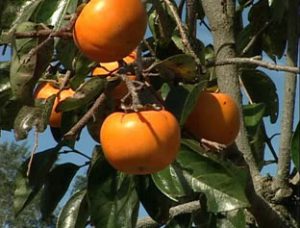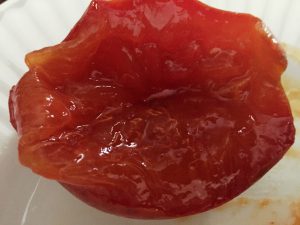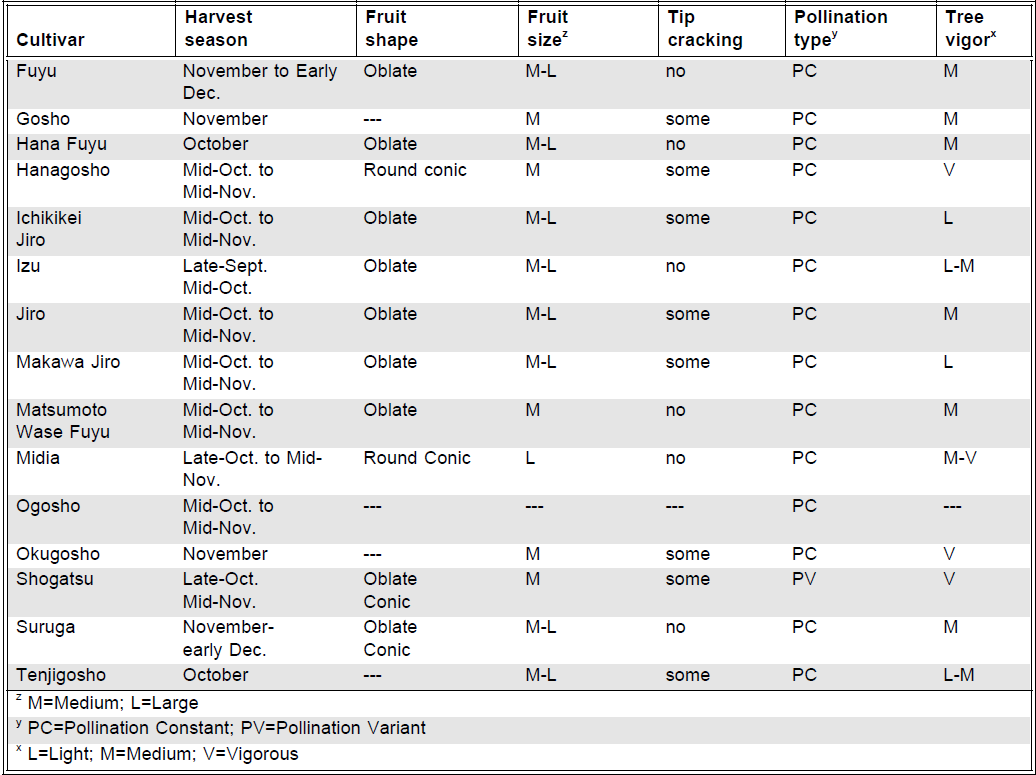
A recent visit to the North Florida Research and Education Center reminded me of the potential of a specialty fruit that is often forgotten about in Northwest Florida, the Oriental persimmon. The Oriental, or Japanese, persimmon (Diospyros kaki) was introduced to the Southern United States in the mid to late 1800s. Although it is native to Japan and China, it is a close relative of the native persimmon Diospyros virginiana.
In the early 20th century the oriental persimmon was a popular fruit crop in Florida, but this industry declined due to marketing factors. The Oriental persimmon is still a viable fruit for home gardens and specialty markets in north and central Florida, as it generally produces fruits of high quality and sufficient quantity. Possible markets for the Oriental persimmon include direct farm sales through U-Pick, farmer’s markets, direct sales to restaurants and sales through specialty grocers.
Trees are available grafted onto local native persimmon root-stock, which enhances their ability to perform well in Northwest Florida soils.
Persimmons are divided into two types for the purposes of marketing: astringent and non-astringent. Astringent persimmons contain high concentrations of tannins which cause the mouth to pucker when eating the persimmon, if it is not fully ripe. When fully ripe, they are rich and sweet, but very soft. Non-astringent cultivars can be picked hard and ripened for 7-10 days at room temperature. Non-astringent persimmons were developed in Japan and introduced to the U.S. market in the 1980s. These have become very popular with home gardeners, since they can be eaten when firm, and have a crunchy texture. Persimmons are popular today in Asian cuisine and as a dessert, since they contain sugars at levels between 15 and 25%.
Persimmons have relatively few pests in Northwest Florida when compared to other higher maintenance fruits such as peaches and plums. Fungal leaf spot caused by species of cercospora, alternaria and anthracnose can cause premature defoliation. Fungicidal sprays are useful in controlling these diseases, if they are at high enough levels to cause tree injury. The stem and branch fungus Botrysphaeria dothidia will cause deep, elongated branch lesions similar to canker. These openings invite borers into the tree and can lead to loss of the limb structure. The best defense against this problem is a good offense; a healthy tree will be less likely to be attacked by this fungus. Dormant sprays of copper or sulfur based fungicides can also help reduce the incidence of all fungal diseases.

The major insect pest of persimmon is scale. Thankfully, scale can be controlled with dormant oil or season all horticultural oil. Persimmon psylla can cause leaf deformation early in the season, but is not always a large enough problem to warrant control. Natural enemies often eliminate the need for chemical control. If control is necessary, several insecticides labeled for fruit trees will take care of the problem. Twig girdlers can lay eggs on persimmon stems in September and October, and once hatched, the insect can girdle the stem and the stem will die. To control this pest it is important to remove dead and infected wood each growing season.
Out of the non-astringent cultivars, Fuyu regularly rates as the most popular and reliable cultivar. It does require thinning, since it often sets too much fruit, which can cause branches to bend and break. A good practice is to thin out 50% of the fruit during years in which fruit set is heavy.
Below is a chart of different non-astringent persimmon cultivar characteristics from the UF/IFAS Extension publication Oriental Persimmons in Florida, from April 1994 by E.P. Miller, Biologist; T.E. Crocker, Professor, Horticultural Sciences Department, Cooperative Extension Service, Institute of Food and Agricultural Sciences, University of Florida.

For further information please consult the following publications
ENH 388: Diospyros kaki: Japanese Persimmon
Oriental Persimmon Varieties for North Florida (previous Panhandle Agriculture article)
 0
0
